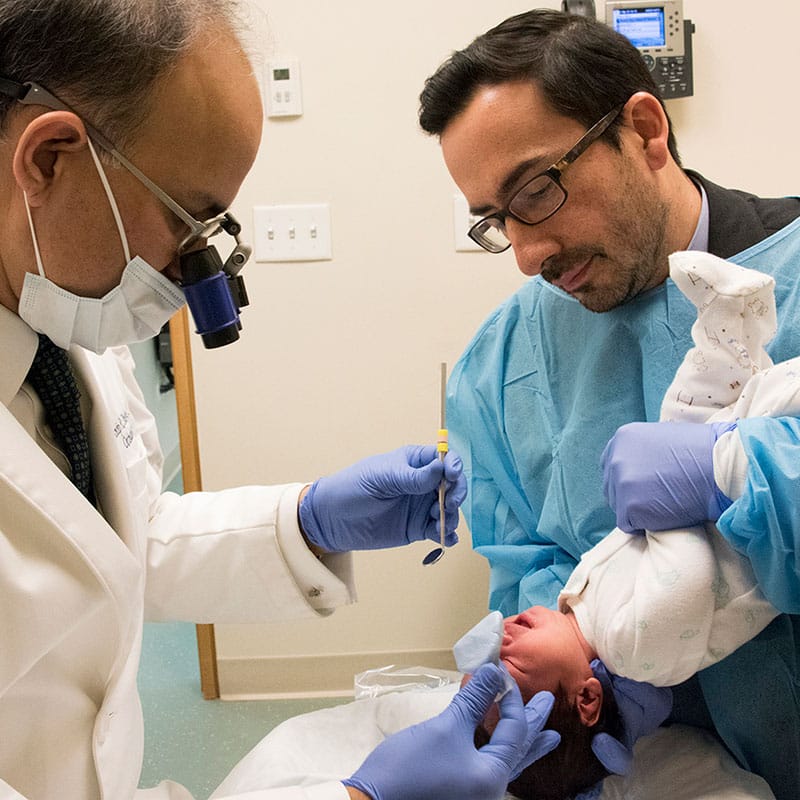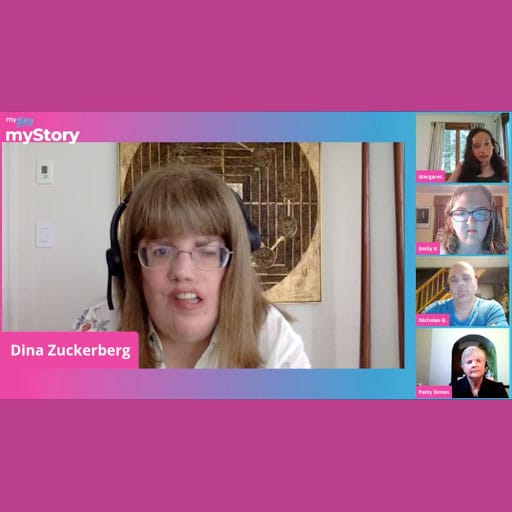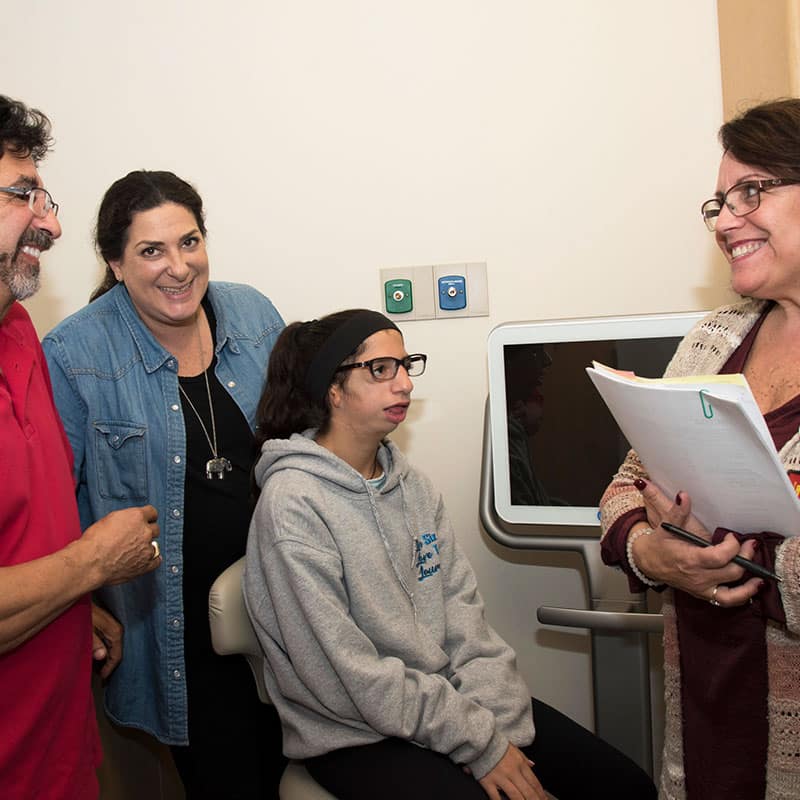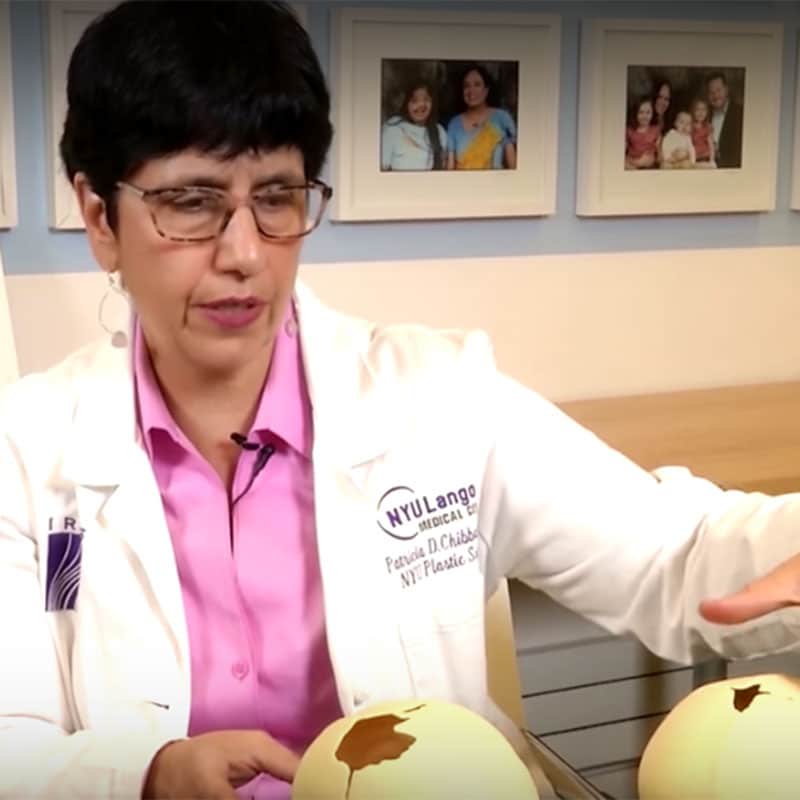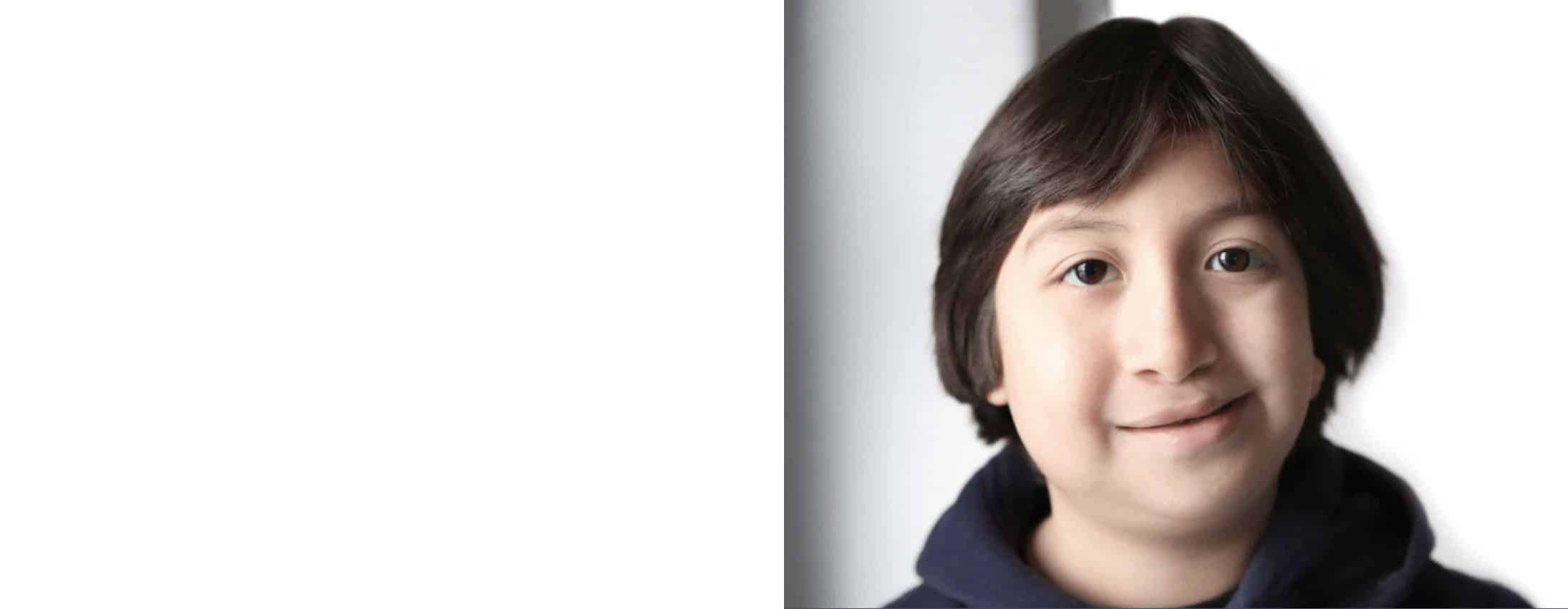Craniofacial Conditions > Crouzon Syndrome > Treatments & Procedures
Treatments & Procedures
Like many other craniofacial conditions, the management and treatment of Crouzon syndrome depends on the features and severity of the appearance-related and functional impact on each individual patient. Aside from a pediatrician, a multidisciplinary team of craniofacial specialists, including oral maxillofacial surgeons, plastic surgeons, neurosurgeons, otolaryngologists (ENT), and ophthalmologists will likely be required to manage the patient.
Surgical Interventions
Surgical interventions are the main form of treatment for most children to prevent the most serious consequences of abnormal cranial development, including:
- Increased intracranial pressure
- Blindness
- Intellectual disabilities
- Hearing loss
- Respiratory and breathing problems
Generally, experts agree that early intervention before the age of 1 year results in lower risk of cognitive disabilities, airway obstruction, and visual problems. Surgery can take place in a staged or a combined approach.
Six Stages of Surgical Protocol
One conventional surgical protocol with 6 stages was described by Dr. Joseph McCarthy et al.
| Age | Stage |
|
Decompression or expansion and reshaping of the skull |
|
Reshaping the frontal and orbital area of the skull |
|
Correction of midface abnormalities |
|
Late correction of midface abnormalities |
|
Orthodontic procedures |
|
Orthognathic surgery (to correct and realign jaw bones) |
Surgical Treatment Options
Minimally invasive (or endoscopic) skull repair
This is a procedure that may be offered during the first few months of the child’s life. Compared with open surgery, the advantages of minimally invasive skull repair include:
- Lower risk of infection
- Less potential blood loss (and less need for blood transfusions)
- Decreased healing time
- Less long-term scarring
Small incisions are made to release the sutures or bands of tissue that connect the bones of the skull. This allows for the brain to grow properly. After the procedure, a special helmet is fitted to the patient to help correct the shape of the skull. In fact, helmet therapy can also be used as a stand-alone, non-surgical treatment for milder cases in which the child only has one or two prematurely fused sutures.
Fronto-orbital advancement (FOA) or open cranial vault remodeling
Another option for surgically correcting the skull is fronto-orbital advancement (FOA), which is done to protect the eyes and to enlarge the skull, and allows the brain to grow. It is typically performed when a child is between 9 and 12 months of age, but can be done up to 2 years of age or beyond in some cases. A plastic surgeon and neurosurgeon will usually work together to move the forehead and upper eye sockets forward, while widening the forehead. Also, a bone graft from the child’s hip or ribs, along with metal plates and screws, will be used to hold the bones in the new position
Le Fort advancements
Surgeries of the upper jaw and cheekbones can help to correct abnormalities such as the way the teeth align. Le Fort 1 surgery may be recommended when the upper jaw is under-developed, which results in the upper teeth being positioned behind the lower teeth. This surgery involves cutting and repositioning the upper jaw to improve how the jaws and the teeth fit together. The surgeon will use metal plates and screws to hold the jaw in its new position. This can also improve breathing through the nose. Le Fort 1 surgery is usually performed after the child’s bone growth has been completed, at about age 16-18, but it may be recommended sooner, around age 12, if the upper jaw needs to be advanced a large distance. Also, in cases in which the upper jaw needs to be advanced a larger distance (such as half an inch or more), distraction osteogenesis may need to be used in conjunction with surgery. (See more about distraction osteogenesis below.)
Mandibular osteotomy with distraction or internal fixation
These procedures may be recommended when the mandible (lower jaw) is underdeveloped. Since an underdeveloped mandible can cause the tongue to be pushed back, this may result in breathing problems. Also, the lower teeth may be positioned too far behind the upper teeth, causing the upper and lower teeth to fit poorly together (“malocclusion”), which makes chewing and eating difficult for the child. Typically performed when the child has finished growing (16-18 years old), mandibular osteotomy with internal fixation is done by cutting into the lower jaw and moving it forward or backward, then fixing it into its new position using metal plates and screws. In cases where the lower jaw needs significant adjustment forward, mandibular distraction is more commonly performed. This procedure also begins with incisions on both sides of the lower jaw, then a distraction osteogenesis (more on this below) device is placed and is adjusted gradually over several weeks to move the lower jaw forward and to make the bone longer.
Computer-assisted surgery
Using a computer-assisted approach, surgeries are often shorter and more precise, as the technology helps surgeons to better understand the anatomy of each patient.
Distraction osteogenesis
This technique utilizes the placement of an internal or external device to lengthen and remodel bone. The surgeon makes a break in the patient’s bone and places the device between the bone pieces, allowing new bone to fill the gap. The device is adjusted at regular intervals until the desired bone lengthening is achieved. Distraction osteogenesis is often used to reshape the bone of the jaw, mid-face, and cranium. This technique can also be used in conjunction with other surgeries to reshape and reposition bones.
Airway treatments
If a child is born with a blocked airway as a result of Crouzon syndrome, the medical team will come up with an immediate plan for treatment. Airway obstructions can be treated in a variety of ways, including a tracheostomy, which requires the surgeon to make an incision in the neck into the trachea or windpipe to insert a breathing tube that is connected to a mechanical ventilator to assist the child with breathing. The Le Fort 3 surgery, which advances the midface (the upper jaw and cheekbones) will also help to improve breathing. When done for the purposes of improving breathing, this surgery can be done as early as age 3.
Dental treatments
Many children with Crouzon syndrome have an underbite, as well as misaligned teeth. Delayed tooth eruption is also common. Children should visit a pediatric dentist as soon as teeth start to come in – no later than 2 to 3 years of age.
Patients with Crouzon syndrome who have more serious under-development of the midface and jaw structures are more prone to develop airway obstruction and breathing problems. In the most severe cases, this may require a tracheostomy, as described above, until the child is ready for other surgeries. Others may need a tonsillectomy or adenoidectomy to open the airway. In mild or moderate cases, patients may need assistance via a continuous positive airway pressure (CPAP) mask.


